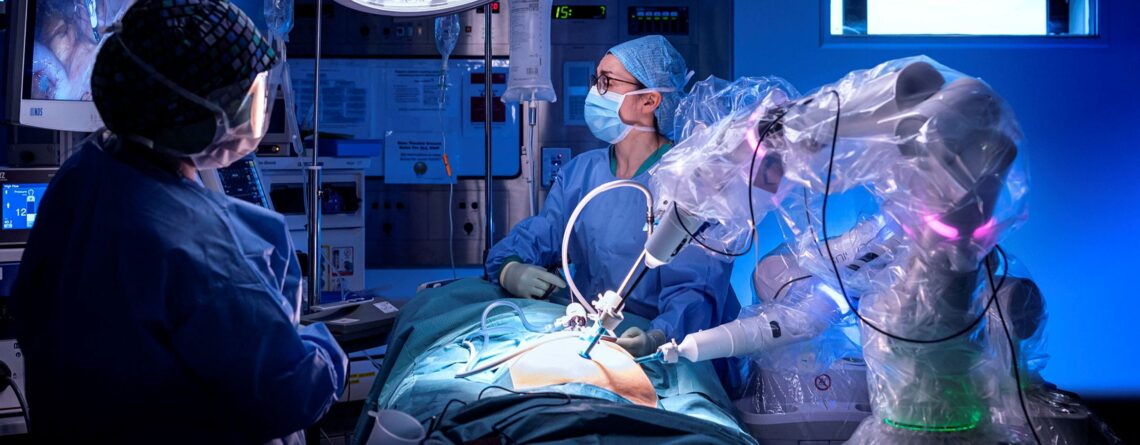[vc_row][vc_column][vc_column_text]
Advanced Surgery with robotics
Move over factory floors, robots are now in the operating room! Robotic surgery utilizes sophisticated systems developed by leading medical device companies. These systems empower surgeons to perform complex procedures like prostate removals, hysterectomies, and appendectomies through tiny incisions, minimizing traditional surgical scars.
What is robotic surgery?
Imagine surgery with smaller incisions, greater precision, and faster recovery times. That’s the reality of robotic surgery. Surgeons wield robotic instruments, allowing them to perform minimally invasive procedures with unmatched control. This translates to less pain for you, a quicker return to your daily routine, and ultimately, an improved quality of life.
How is it performed?
Surgery begins with very small incisions being made where the surgical tool and camera are inserted. The robot is controlled by a surgeon who sits at a console, which allows them to see what is happening inside your body through images from cameras on the robot. The operating table can also be connected to this computer so that when you move or shift in bed during surgery, it automatically adjusts its position so that your surgeon stays in line with their tools and instruments.
During surgery, your anesthesiologist is more than just a monitor. They’re your active partner, constantly tracking your vital signs like heart rate, breathing, and blood pressure. This close watch allows them to anticipate potential issues. If unexpected bleeding occurs, they’ll spring into action, working swiftly and effectively to stop it before it becomes serious. Their expertise helps prevent complications like shock or cardiac arrest.
The usage of small, computerized instruments to perform operations which are less invasive than traditional methods.
We can use it for variety of procedures, including prostate surgery and gynecological surgery.
Unlike traditional laparoscopy, robotic-assisted procedures put the surgeon in control from a console. Here, they manipulate the robot’s arms through minuscule incisions in the patient’s body. These robotic arms boast tiny, attached tools, granting the surgeon far greater control and precision than traditional laparoscopic techniques alone.
Benefits of robotic surgery
The surgeon has a three-dimensional view of the operation on a video screen.
This allows for better visualization and control than traditional methods, resulting in:
- Faster recovery time and shorter hospital stay
- Less invasive surgery with less risk of infection and blood loss than open surgery (where your skin is cut open)
- Less pain:
- Less scarring:
- Less blood loss: This is because the surgical team can see exactly where they’re going and work around any blood vessels that are in the way. Meaning less post-operative complications such as infections, which can be life threatening if left untreated for too long!
Conditions that can be treated using it:
- Abdominal surgery.
- Breast surgery.
- Colon surgery.
- Gynecological surgery (including hysterectomies).
- Liver surgery.
Finally, it’s a great option for people who want a less invasive approach to their surgery. It allows doctors to perform operations with greater precision and accuracy, which means that they can often avoid major scarring or other complications.
You can contact us to provide you with the highest quality doctors, take a look at our Testimonials
We follow- up with you even after you return back to your home country, we even have remote follow-up services
I’m glad to inform you that, we have specialized doctors, and they speak many languages (Arabic – English – Italian – German)
[/vc_column_text][/vc_column][/vc_row][vc_row][vc_column]
[/vc_column][/vc_row]










